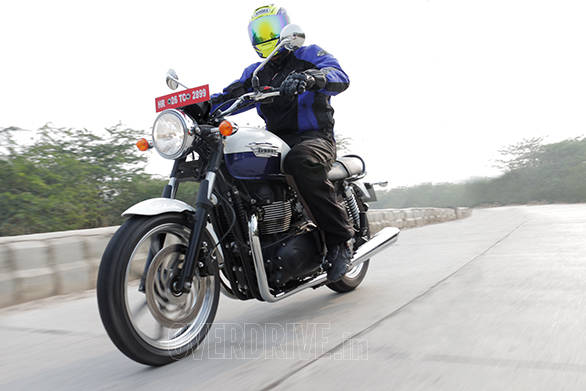Better riding: Trashplaning
We've discussed target fixation, smoothness of vision, brake articulation and closing speeds earlier in Better Riding. The first two advise you on how to manage obstacles, surround traffic and errant commuters and the latter tell you how you should safely bring your bike to a stop in conditions normal and hairy alike.
But what if your obstacle is almost invisible? What if you could only haptically sense the situation, but it's already too late? In these conditions, you should let your brain process the situation calmly, govern your reflexes and avoid sudden inputs; because while on the road, panic, especially when you're riding motorcycles, only leads to disaster.
I was confronted by such a situation recently on my commute back home from work. I was riding through a particularly narrow arterial road and I could spot traffic gathering ahead of me. When I eased off the throttle and applied my brakes, I sensed my front-end beginning to skid, before long my bike began to wallow and shudder because it abruptly regained grip again (whilst locked) after the sudden loss of traction, and my situation was compounded by the fact that this was a posh part of town and any miscalculation in my part would lead to either falling on German luxobarges to my left or oncoming traffic - more German luxobarges to the right.
What happened was I had braked over a transparent piece of plastic (not that different from the plastic cover which OVERDRIVE comes in) and the effect of the relative motion between the layer of plastic and tarmac caused my front wheel to lock. I'd like to call this "Trashplaning" because the effect is much similar to aquaplaning; only instead of water, trash is the culprit causing this loss of traction and subsequently loss of control.

But in reality, bikes don't really aquaplane that easily. Their contact patches are round instead of flat and the tyres are also narrower (which means more pressure per area of contact patch and therefore less chance of aquaplaning).
Trashplaning can be compared to how your bike would act when it hits a patch of dirt or oil during braking in behaviour and onset. So what should one do while facing such a situation?
Your first instinct especially during low speeds, when your bike feels funny, is paddling your feet for balance. Try to resist this instinct because the flailing appendages add to your troubles. Bikes are designed to settle down and your legs won't help that natural equilibrium.
Avoid making violent corrections/inputs. When the skid isn't severe (and during cases like these, it usually isn't) you'll just need to endure until your bike regains grip. And the last thing you need is both wheels losing traction.
Fingers off the brakes, the moment you sense you're skidding. Completely release pressure from the levers until your wheels begin rotating freely again and then come to a stop, if necessary - after leaving the trash behind.
In my case, I had already reduced my closing speeds to a minimum, so I managed to save my bike without too much drama. Assuming you faced the trashplaning situation at higher speed, you'd have either badly injured yourself or rear-ended a white Toyota Fortuner whose occupants, based on their political affiliations, would've returned the favour by treating you to a few friendly slaps or by bludgeoning you to near- death.
There's no arguing that riding motorcycles, however rewarding and exhilarating, is always a risky proposition. There's no escaping the fact that imminent danger can be millimetres thin and a sharp mind and honed skills are your best allies.
This article has been written by OVERDRIVE reader, Vijay Srivatsan. You can follow him on twitter @vijaysrivatsan
Starts Rs 29.98 Lakhs
2755cc
Automatic
166
500
-NA-













